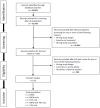Anemia among Women of Reproductive Age: An Overview of Global Burden, Trends, Determinants, and Drivers of Progress in Low- and Middle-Income Countries
- PMID: 34444903
- PMCID: PMC8401240
- DOI: 10.3390/nu13082745
Anemia among Women of Reproductive Age: An Overview of Global Burden, Trends, Determinants, and Drivers of Progress in Low- and Middle-Income Countries
Abstract
Relatively little progress has been made in reducing anemia prevalence among women of reproductive age (WRA anemia). Interventions, policies and programs aimed at reducing WRA anemia have the potential to improve overall not only women's, but also children's health and nutrition outcomes. To our knowledge, this is the first review that aimed to compile evidence on the determinants and drivers of WRA anemia reduction in low- and middle-income countries (LMICs). We synthesized the available evidence on the determinants and drivers, including government policies and programs, of WRA anemia and their mitigation strategies across a wide range of countries and geographies, thus contributing to the complex and multifactorial etiology of anemia. We carried out a systematic review of published peer-reviewed and grey literature assessing national or subnational decline in WRA anemia prevalence and the associated drivers in LMICs. Among the 21 studies meeting our inclusion criteria, proximal determinants of healthcare utilization, especially during pregnancy and with the use of contraceptives, were strong drivers of WRA anemia reduction. Changes in other maternal characteristics, such as an increase in age at first pregnancy, BMI, birth spacing, and reduction in parity, were associated with modest improvements in anemia prevalence. Access to fortified foods, especially iron-fortified flour, was also a predictor of a decrease in WRA anemia. Of the intermediate determinants, an increase in household wealth, educational attainment and access to improved sanitation contributed significantly to WRA anemia reduction. Although several common determinants emerged at the proximal and intermediate levels, the set of anemia determinants and the strength of the association between each driver and WRA anemia reduction were unique in each setting included in this review. Further research is needed to provide targeted recommendations for each country and region where WRA anemia prevalence remains high.
Keywords: anemia; hemoglobin; nutrition; women of reproductive age.
Conflict of interest statement
The authors declare no conflict of interest.
Figures



References
-
- WHO . Haemoglobin Concentrations for the Diagnosis of Anaemia and Assessment of Severity. World Health Organization; Geneva, Switzerland: 2011.
Publication types
MeSH terms
Grants and funding
LinkOut - more resources
Full Text Sources
Medical

